As is our tradition for every overseas trip we take, we’d do a final retrospective post about our observations of the country we traveled to, with our notes centred not only on places we visit, but also of food, culture and the overall trip.
While our 2019 trip to Japan was also 15 days long like this 2022 one, this year’s vacation has been actually slightly longer in actual duration. In the 2019 trip, we arrived in Tokyo in the early evening; compared to this year when we arrived in Nagoya mid-morning and thus had an additional day to work itinerary events in. The planning process on the other hand was pretty rushed this time: we confirmed our travel dates only in September, and over the course of two days that month, had both our vacation periods approved.
As soon as the country of visitation was decided upon, we started with the usual research and getting abreast of the post-pandemic changes on travel to Japan. One big change is of course in immigration procedures. I reckon many countries are balancing the risks of having imported Covid cases into the country against it being a barrier to visitors deciding on their vacation places and whether it’s worth the hassle of tedious immigration processes. I reckon Japan sits somewhere on the side of erring on the side of caution! Prior to our departure, we had to submit a ton of declarations and vaccination documents using the Visit Japan web site, and for each of us. These included the usual customs declarations, and also vaccination statuses.Fortunately, Singapore has a very useful document portal that lets us obtained notarised copies of our vaccination documents.

Another noticeable change was the increased and now wide-spread use of digital payment systems. In our two trips to Japan in 2019, there were still a number of places we visited – especially the small establishments and/or places outside the big cities – which did not accept credit cards for payment. This time, every place we went to supported credit card payment, so it routinely became a simple question of whether we wanted to pay using cash or card.
There was also that new rule about carrying oversized baggage onboard the Shinkansen. Going with our pre-departure itinerary, this was always unlikely a problem for us since we planned for only two Shinkansen rides on account that the two JR passes we were buying included only a small selected number of Shinkansen routes in the package. And for these, we would not be relocating but just doing day trips. Nonetheless, we wanted to be prepared, so ensured that the aggregated Length/Breadth/Depth dimensions of our two cases did not exceed 160cm. Our two luggage cases were within that, and with some margin too – it sat at 152 to 154 cm for both cases. It seems then that the 160cm limit is pretty generous and I reckon this regulation would not pose problems for most travelers, even in the case of families like ours.
That said, bringing onboard luggage that is within the size limit does not mean that it makes for comfortable seating. You still have to squeeze your luggage case in your seat row if there is no space in the baggage compartment of the train car you’re in, i.e. very little remaining legroom unless you don’t have someone sitting beside you in the row. We faced that challenge onboard our Kyoto => Kanazawa, and Kanazawa => Takayama relocations, and were a little worried if the train cars would be packed with passengers! We had to decide between going for reserved seats – which had the risk of us being seated away from our luggage cases which we would have to place in another seat row – or unreserved seats, which meant we could move to a different seat row with our luggage. This eventually turned out to be a non-issue: our relocations were all early morning, with us boarding trains at 7AM-ish each time. In each relocation, we found plenty of spare seats available in the cars we were in, whether reserved and non-reserved.
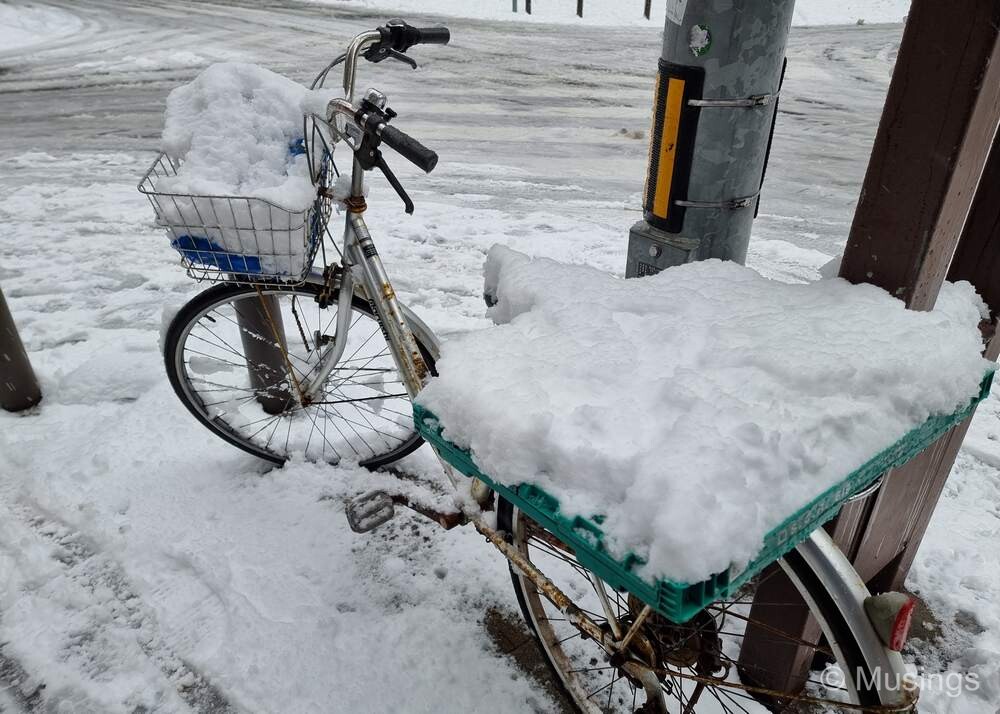
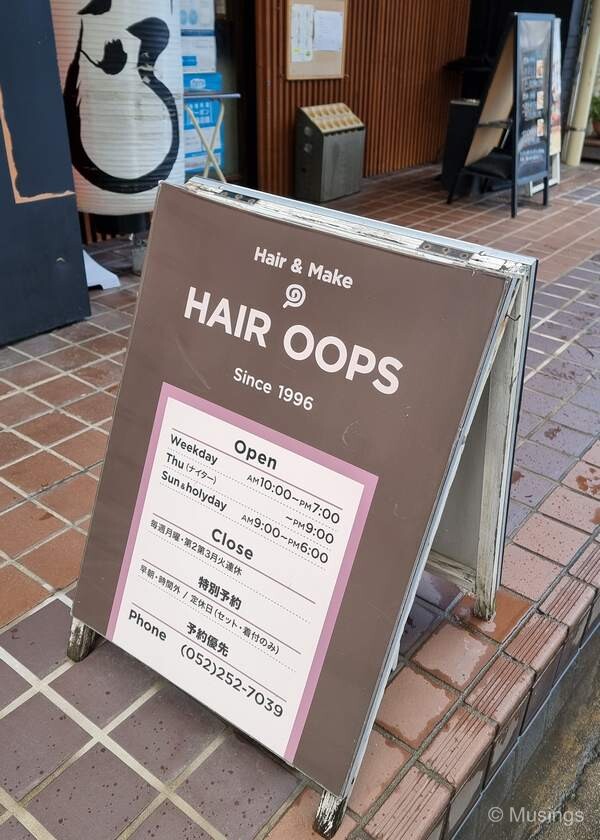
The trains in Japan as a rule were unfailingly punctual, and arrive at the exact minute (it was a bit iffy for buses) according to the arrival timetables. But what we again still couldn’t get used to, coming from a Singapore where train lines are not complicated, was that for the major train stations in the large cities of Nagoya, Osaka and Kyoto, a track routinely was routinely shared by multiple lines. It also did not help that we sometimes could not clearly hear the announcements of oncoming trains and whether they were express or normal trains. So, Day 13 we’d just arrived at Nagoya and were making our way to the Toyota Commemorative Museum of Industry and Technology, we got onboard an incorrect train on the correct platform, and the train only stopped at a station about 10 kilometers past where we were supposed to alight.
Still talking about trains: at the end of Day 04 when we were making our way back from Himeji to Kyoto, we received prompts from Google Maps that there was significant delay in train timings – and the advisory read that there had been some kind of train accident involving human contact. That sounded pretty scary, and we thought there was some kind of suicide! I assume that the accident type basically includes any kind of incident involving human contact with trains, and do not always result in fatalities: it could be because someone was using a phone without noticing an incoming train and thus having his limbs come into contact. It’s still pretty serious of course. The other thing we learned later was that these accidents are common. They can occur, apparently, several times a day in Japan’s extensive and massive train network. While in Singapore, any similar incident of this kind will be immediate headline news!
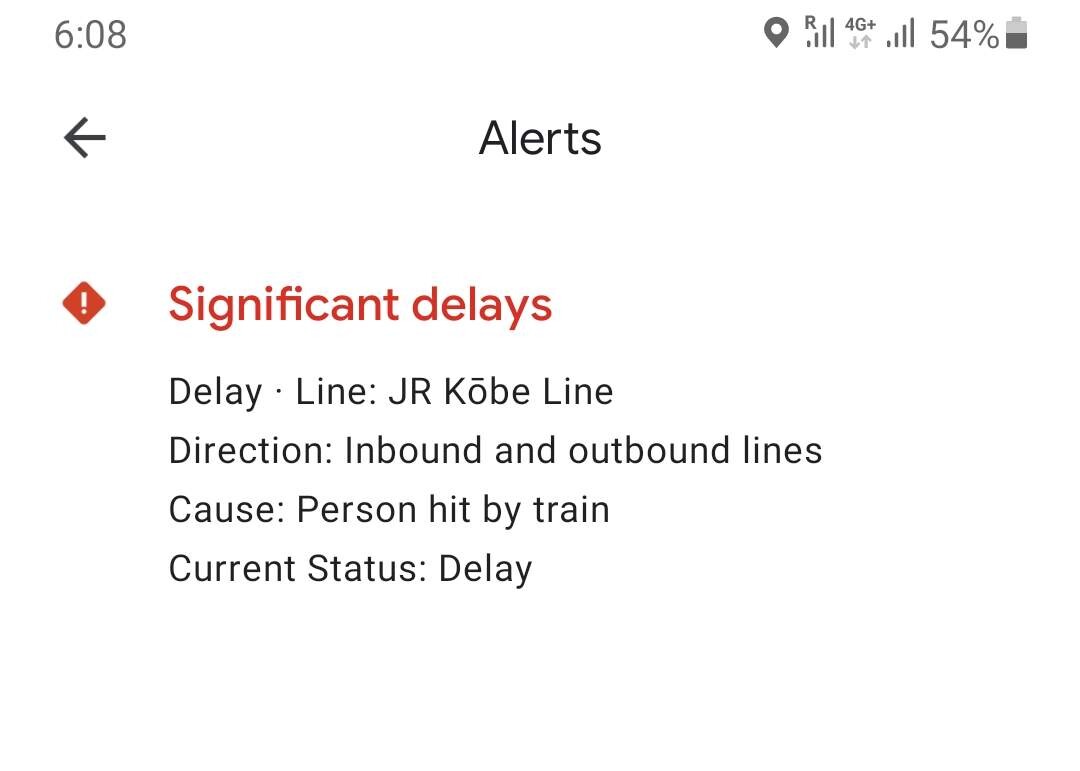
Another significant post-Covid change we saw was the relative absence of tourists in most places. Oh, several of the major tourist-y attractions still saw crowds (mostly local and South Korean I think), it was never to the point of congestion we saw during our 2019 trip. And this I think is largely because of the relative absence of the PRC crowd. In short, at least going with Facebook posts, many Singaporeans here enjoyed their Nov-Dec 2022 trips to Japan and South Korea in good part because China had not lifted its border restrictions at that point! All this is going to change imminently of course, what with announcements that China is lifting travel restrictions from 8 Jan 2023. Sigh. But at least we got our one relatively peaceful Japan trip in before the hordes invade again!
Speaking about Covid regulations: mask-wearing was everywhere among the locals, even though the mandatory mask-wearing regulations in Japan had been mostly lifted for several months now. I wonder if that the locals are still wearing masks everywhere is a result of them being only health minded, or the result of social conformity, or both. Sure, this society has always been obsessive with masks. The mask wearing was a major challenge for me: not because I wasn’t trying to be funny – nothing like that – but the lenses on my spectacles kept fogging up! I forgot to bring my anti-fog spectacle spray for this trip. That would had helped a lot.
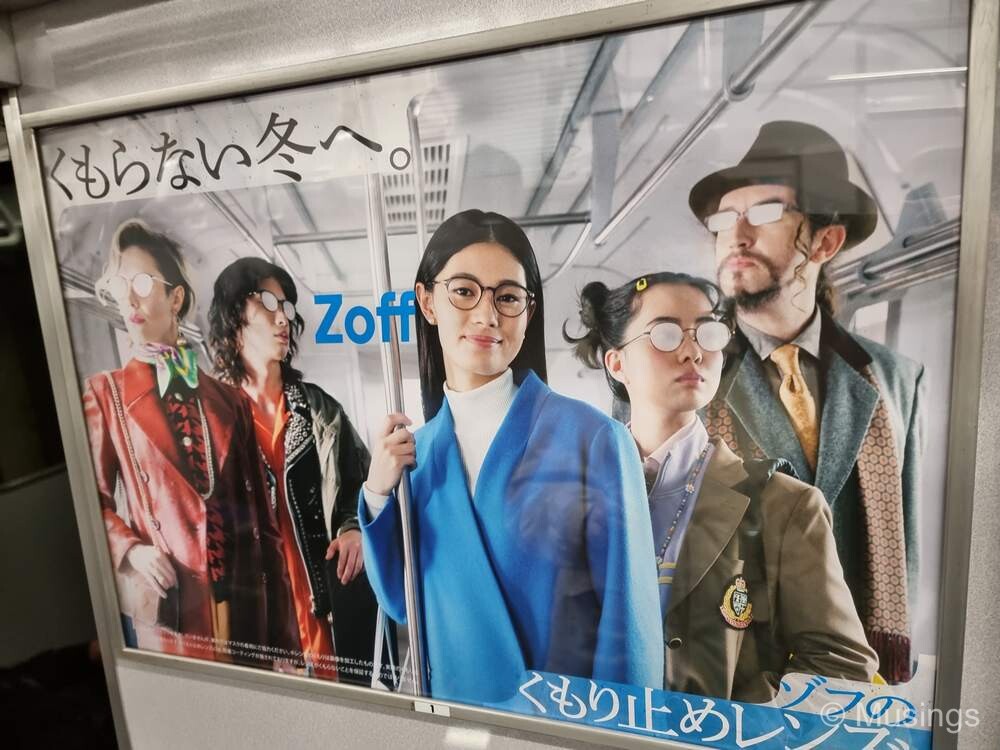
Costs-wise, on the overall, this 2022 trip on paper cost us at least slightly less than the 2019 one. The latter was on the overall fairly expensive because of the additional domestic flight we took to get us to from Tokyo to Sapporo and back. And also we booked trips with day tour groups. However, one has to keep in mind also the weakness of the Japanese yen against global currencies: which means it should had been substantially and not just slightly cheaper for us to travel to Japan this year.
When I tabulate the numbers, it seemed that dining has become slightly more expensive in 2022 in Japan. Keep in mind too that in Japan, there are generally few cheap street food options – at least where we were at anywhere. Which means anytime we sit down for a meal, it would be in a restaurant, cafe or eatery. And the cost of that would start from around ¥900-1,000 per person onward, and totaling around around ¥4,000 and higher for the four of us. In Singapore, sure, the per person dining in sit-down restaurants is substantially higher than Japan: our dinner bills in these places here is routinely at least 20% higher. But it’s balanced off also with that we more often than not eat at coffee shops or food courts. So, whether dining in Japan is really cheaper compared to Singapore, comes down to if you consider dining at sit-down restaurants and exclude the consideration of the cheaper food options in Singapore. But then you also get into that thing about whether when on vacation, you’re eating to live or living to eat.
Interestingly, we also saw very few young children on trains and buses, whether accompanied or unaccompanied by adults. Quiet unlike Singapore, where it’s very common to see families with young kids onboard public transportation. I wonder whether this was because of the very low birth rate in Japan – the country is facing an extremely serious problem of a rapidly aging population – or if it was just the time and day of the week and thus entirely coincidental. Since in a couple of places, there were tons of students around, e.g. at Fushimi Inari.
The aging population issue is not otherwise an obviously apparent problem for short-term travelers like us, since the train stations in the large cities continue to be pretty crowded at peak hour. It is however a real problem for those who’re at least current with national issues of that country. We’ve read several accounts of young Japanese opting to migrate out of their country, and this is one of their most commonly cited reasons – the others include the rate of severe natural disasters, the work ethics in corporate Japan, the patriarchy society, and the conformist social fabric.
Which again brings to mind: that personally for me, and with also the benefit of looking at Japan for what it is and without rose-tinted glasses, Japan is an amazing, wonderful place for short-term visitors like us. It has an efficient transportation system, great food, a very wide range of varied natural scenery in a reasonably compact area, and its people are invariably friendly. But it’s still finally not a place I’d want to live in long-term. Singapore, for all its issues of also being fairly crowded, humid, people on the roads being pretty rude, and relative absence of natural sights, still is for me an all-round better place to live, work and raise a family. I avoid crowded places, I’m used to the hot weather, I learn the value of patience when driving, I can always travel to nearby countries easily, and we have so many social systems that protect and nurture the young. So no, I’m not one of those who’d put Japan on a pedestal and only sing its praises and in the same breadth complain about Singapore. Pet peeve of mine, but there you have it.
On a happier note: what was my most memorable experience this trip? Well, we were treated to glorious autumn colors at Uji Prefecture Park and Koko-en garden in Himeji, and also the winter landscapes of Shirakawa-Go and also Kenroku-en garden. But the overall all-round experience that I won’t forget is actually more personal: it was playing the public pianos at two places: Kyoto Station on Day 06, and at the 15th floor of JR Tower in Nagoya on Day 14. The locals playing before and after me each time were very proficient and entertained onlookers with the traditional – and technically challenging – classical pieces. When it came to my turn, I managed the simpler modern pieces from Yiruma and Yukie Nishimura. The daughter observed later that I looked super-stressed playing, and she was absolutely right on that!
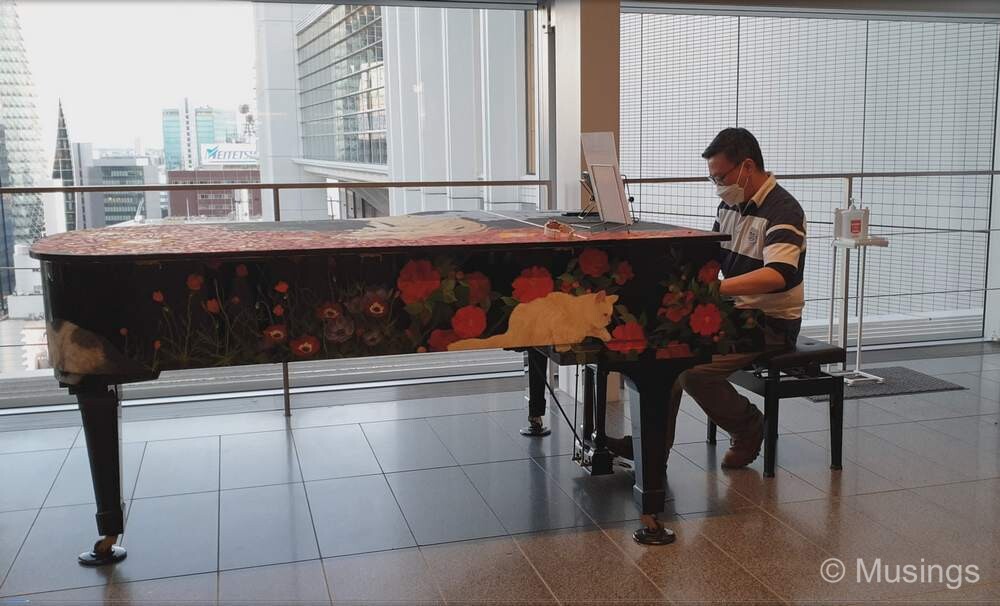
All in, this was a pretty successful and thoroughly enjoyable trip, even with the changes in itinerary that resulted in us not visiting Oshima Island and Gujo Hachiman, and not getting an opportunity to see Mt. Hakata from the ropeway summit. But on the other hand, none of us fell sick, contacted Covid, Mt. Fuji did not erupt and throw the country into chaos, and we left with great memories and incredible photos and videos. And we enjoyed the company of Matt, our favorite Ang Mo bud.
We’re now preparing drawer plans for a next Japan trip, maybe again at the year’s end of 2023 – and this time to Nagano and further north of the Tohoku region.